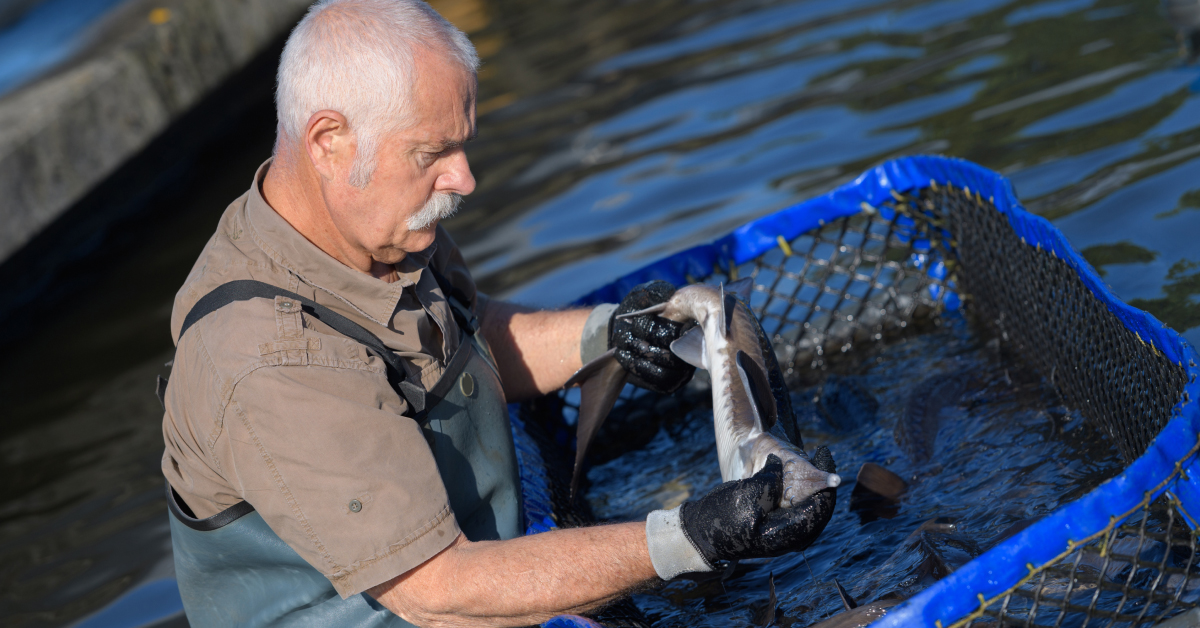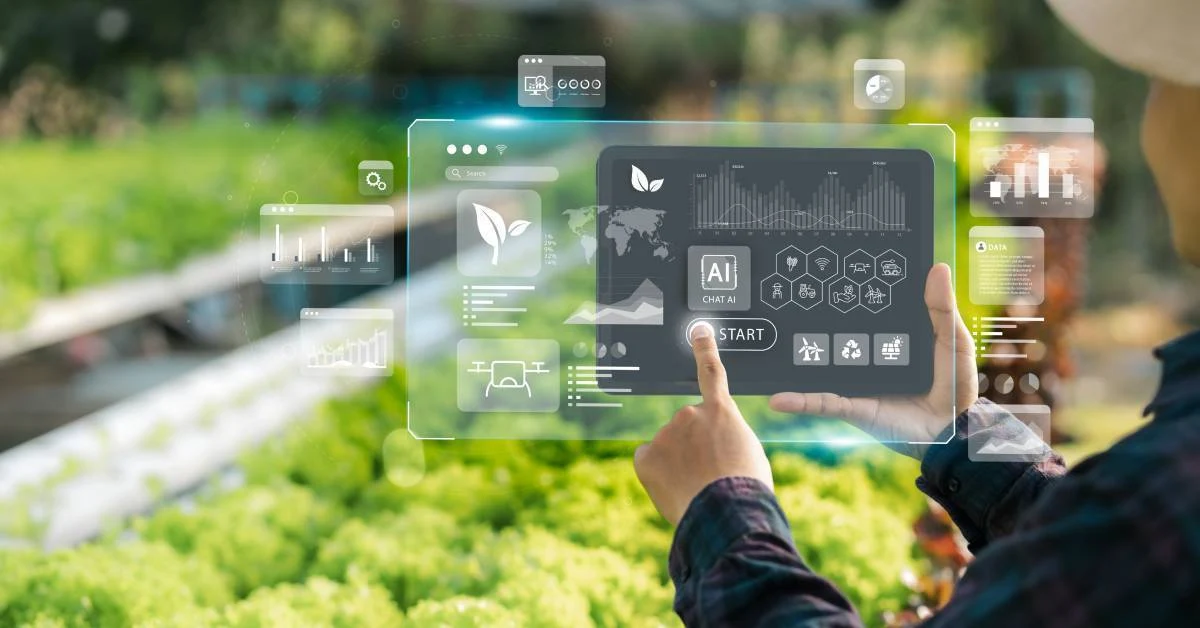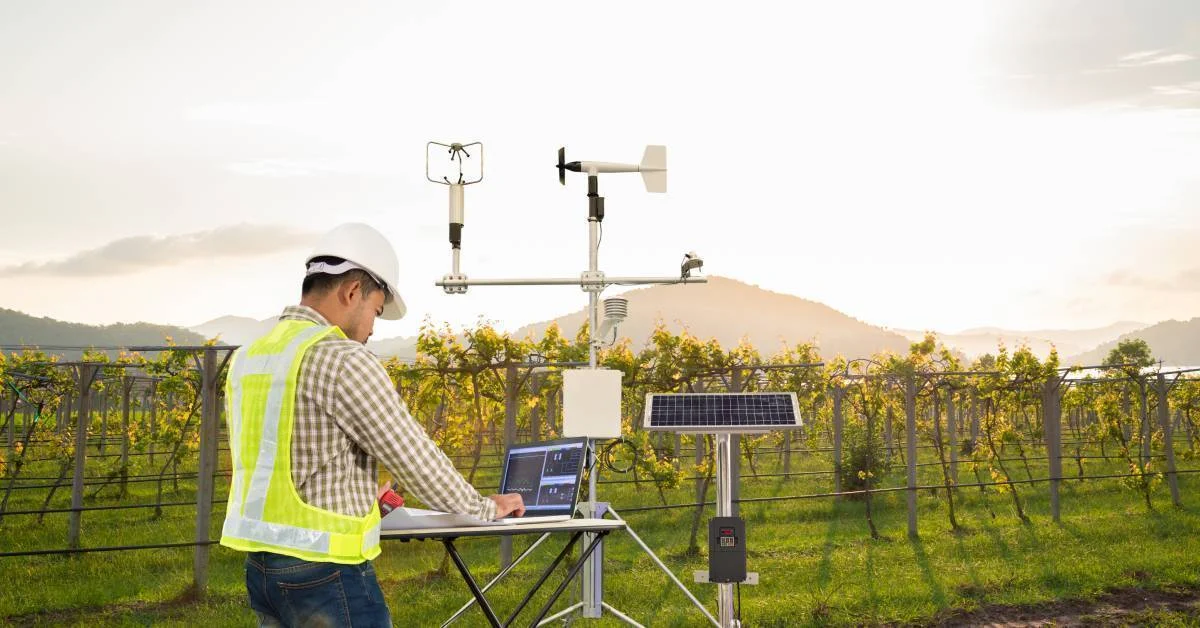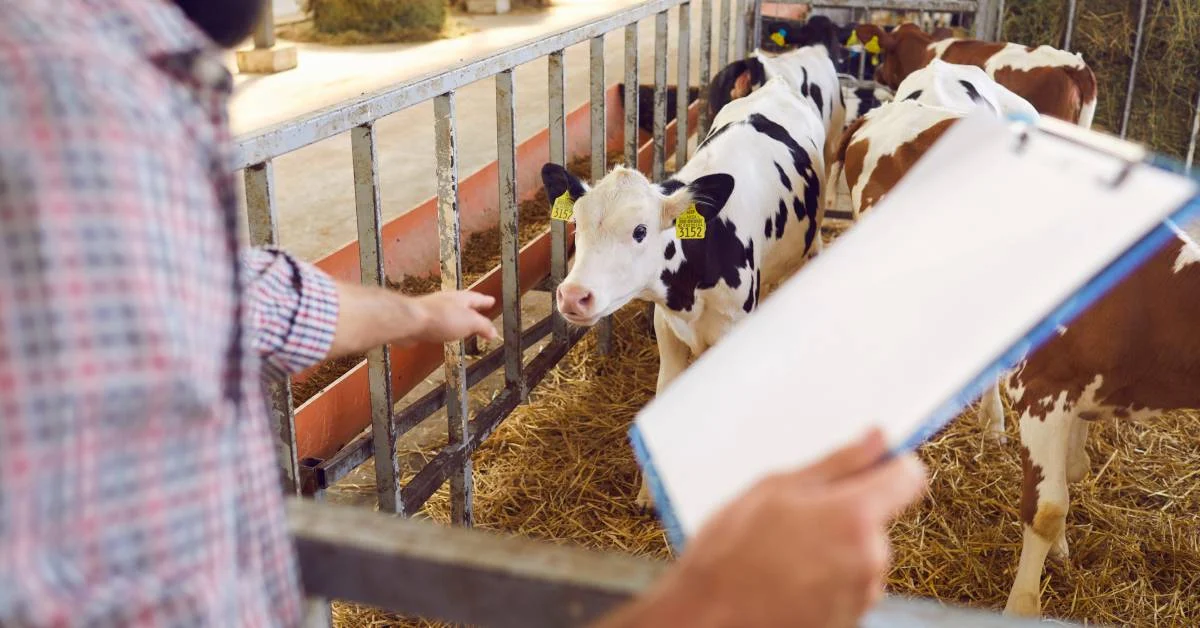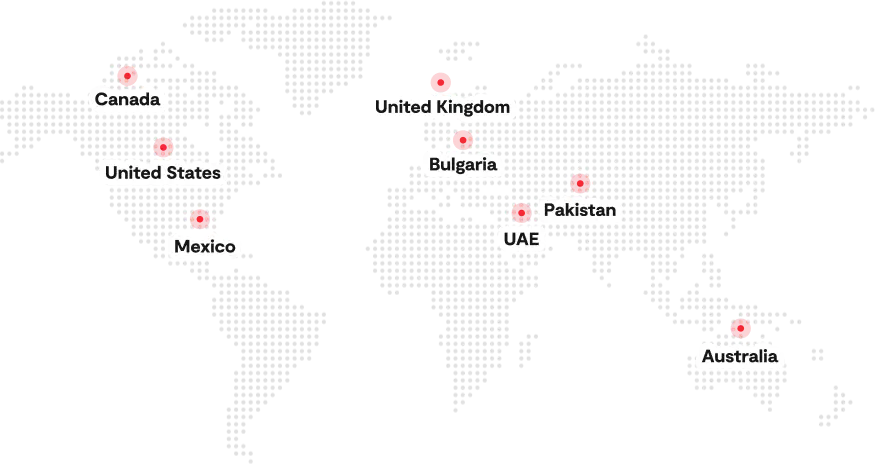Fish farming has come a long way from traditional ponds and guesswork-based operations. With rising consumer demand for sustainably sourced seafood and growing scrutiny from environmental agencies, aquaculture is under pressure to evolve. According to the Food and Agriculture Organization (FAO), aquaculture now supplies over 50% of global seafood consumption, and this share is projected to increase steadily in the coming decades.
However, as operations scale, so do the challenges, especially regarding fish population tracking, disease outbreaks, feed optimization, and water quality management. That’s where aquaculture management software comes in, not as a luxury, but as a necessity.
Explicitly designed to support sustainable fish farming, this digital toolkit equips farm operators with precise real-time data, enabling smarter decisions about breeding cycles, feeding routines, and harvesting schedules. It also aids in fish health monitoring, environmental impact tracking, and aquaculture inventory management.
Moreover, traceability in the food industry has become a business requirement. With global retailers and regulatory bodies demanding clear sourcing records, fish farm traceability is no longer optional.
Many platforms show how eco-friendly and sustainable fish farming technology is helping aquaculture businesses stay competitive while preserving marine ecosystems. As the industry faces tightening regulations and increasing scrutiny, digital transformation through fish farm management software may be the most practical path to truly sustainable operations.
So, how does this technology help fish farms meet profit goals and environmental responsibilities? Let’s dive in.
What are the Challenges in Sustainable Fish Farming Operations?
Before a single fish reaches the market, a series of tightly managed pre-harvest processes determines the long-term success and sustainability of the operation. From hatchery records to feeding routines, every decision made early has ripple effects on environmental integrity, regulatory compliance, and overall product quality.
Here’s how these pre-harvest challenges shape the future of sustainable fish farming and why technology is becoming a critical tool to manage them effectively.
Monitoring Water Quality and Resource Use to Minimize Environmental Impact
Water quality is one of the most critical determinants of fish health and ecosystem balance. Poorly managed ponds or cages can lead to oxygen depletion, excess nitrogen buildup, and toxic algal blooms, which reduce yield and threaten marine biodiversity.
Tracking pre-harvest metrics like dissolved oxygen, ammonia levels, pH, and temperature across grow-out ponds is essential. Without consistent environmental impact tracking, farms risk fish mortality and long-term ecosystem damage. Modern aquaculture platforms incorporate sensors that gather real-time data for sustainable fish farming, helping managers make data-backed adjustments to maintain healthy growing conditions.
Establishing Full Traceability from Hatchery to Harvest
Transparency starts long before the fish hits the processing plant. Knowing the origin of the fry, the type of feed used, the vaccination schedule, and the water parameters throughout the grow-out cycle is essential for traceability. According to the FAO, improved tracking from hatchery to harvest has become a priority due to increasing concerns about fraud and mislabeled seafood in global markets.
Digital fish farm traceability systems allow producers to log and retrieve detailed pre-harvest data points, from hatchery selection to feedlot numbers. This visibility is especially valuable during audit inspections or third-party certifications.
Balancing Feed, Stock, and Equipment Through Smarter Inventory Management
During pre-harvest phases, aquaculture operations must carefully balance feed usage, medication schedules, and the supply of critical tools like nets and aerators. Overstocking can lead to spoilage and higher costs, while shortages can delay necessary treatments or compromise fish welfare.
Aquaculture inventory management software is reliable for tracking feed consumption against biomass growth, monitoring medication levels, and scheduling equipment maintenance. The goal isn’t just cost control and supporting eco-friendly and sustainable fish farming technology that reduces waste and optimizes input efficiency.
Detecting Disease Risks Early Through Proactive Fish Health Monitoring
Pre-harvest fish health is fragile and can deteriorate quickly if not closely monitored. Pathogens like Aeromonas and parasites like Ichthyophthirius can decimate populations in days if not caught early. Disease outbreaks before harvest account for billions in global losses annually, as noted by The World Bank.
Modern tools for fish health monitoring rely on real-time behavioral data, such as feeding response, swim patterns, and respiration rates, captured by cameras and biometric sensors.
These insights support early interventions, reducing the need for antibiotics and lowering mortality rates. Combined with fish population tracking, this helps farms maintain healthy stocking densities and minimize stress-related issues.
Maintaining Compliance with Local and International Sustainability Standards
Meeting environmental and food safety regulations means keeping meticulous records from day one of the grow-out cycle. Certification schemes like ASC and BAP require proof of responsible feeding practices, water testing logs, and vaccination records.
These pre-harvest data points form the backbone of regulatory audits. Using digital fish farm management platforms, operators can automatically generate logs required for audits, helping align with international standards.
How Aquaculture Software Drives Sustainable Fish Farming?
Modern aquaculture operations are under pressure to meet growing food demands while reducing their ecological footprint. Technology, particularly software that manages complex variables throughout the production cycle, is pivotal in supporting sustainable fish farming.
Here’s how aquaculture software actively supports eco-conscious operations:
Hatchery and Breeding Management
Controlling breeding practices starts with data. Aquaculture management systems track hatchery lineage, spawning events, and water parameters during early development stages. This data is essential for ensuring healthy fingerlings and managing breeding stock for genetic sustainability. According to the FAO, over 50% of global fish production comes from aquaculture, highlighting the need for planned and traceable breeding.
Feed Optimization and Waste Reduction
Feed typically represents up to 60% of operational costs in sustainable fish farming. Software-driven feed schedules based on species, growth stage, and environmental conditions help avoid overfeeding, a leading contributor to water pollution and resource waste. Precision feeding reduces feed conversion ratios (FCRs), key to lowering aquaculture operations’ carbon footprint.
Water Quality and Environmental Monitoring
Continuous environmental impact tracking is critical in aquatic environments. In real time, software tools monitor key parameters such as temperature, pH, dissolved oxygen, and ammonia. Alerts and historical trends enable fish farm managers to react before water quality deteriorates. A study by the World Bank emphasizes that water degradation from aquaculture can be reduced through digital monitoring and responsive systems.
Fish Health and Disease Management
High stocking densities can lead to rapid disease outbreaks. Fish health monitoring modules help detect anomalies in behavior or growth patterns early, using real-time data for sustainable fish farming. Some systems also integrate diagnostic support to recommend treatment options, improving survival rates and reducing antibiotic dependence. This proactive approach is vital for maintaining biosecurity and fish welfare.
Inventory and Resource Management
Proper aquaculture farm inventory management minimizes waste and ensures that essential resources, like feed, nets, and vaccines, are stocked according to forecasted needs. Real-time updates allow farm managers to balance inputs and outputs more efficiently while tracking usage to reduce losses and environmental burdens.
Traceability and Compliance Reporting
Sustainability is not just about practices, but it’s about proof. Food traceability software records everything from hatchery data to feed types, water quality logs, and health treatments. This data helps operations meet the traceability requirements of global sustainability certifications like ASC or BAP, improving consumer trust and market access.
Harvest Planning and Post-Harvest Processing
Software-assisted harvest planning enables operations to prepare based on growth data, ensuring that fish are harvested at the optimal size and condition. This minimizes stress, improves yield, and supports better seafood processing outcomes. It also helps reduce waste in eco-friendly and sustainable fish farming technology pipelines by aligning harvest schedules with market demand.
Data Analytics and Business Intelligence
From fish population tracking to environmental trends, integrated analytics tools convert raw data into actionable insights. Farm managers can forecast stock performance, compare historical patterns, and make informed decisions aligned with profitability and sustainability goals.
How Does Folio3 AgTech Smart Aquaculture Software Support Eco-Friendly and Sustainable Fish Farming?
While the broader benefits of aquaculture software are evident, Folio3 AgTech’s Smart Aquaculture Software stands out by offering a specialized, end-to-end digital ecosystem tailored for aquafarming operations. This platform is built with the realities of modern sustainable fish farming to help in rising production costs, water quality fluctuations, disease outbreaks, and mounting regulatory pressures.
The goal isn’t just operational efficiency; long-term sustainable fish farming reduces environmental strain and ensures food security. However, here’s how Folio3 AgTech improves sustainable fish farming:
Intelligent Hatchery and Stocking Operations
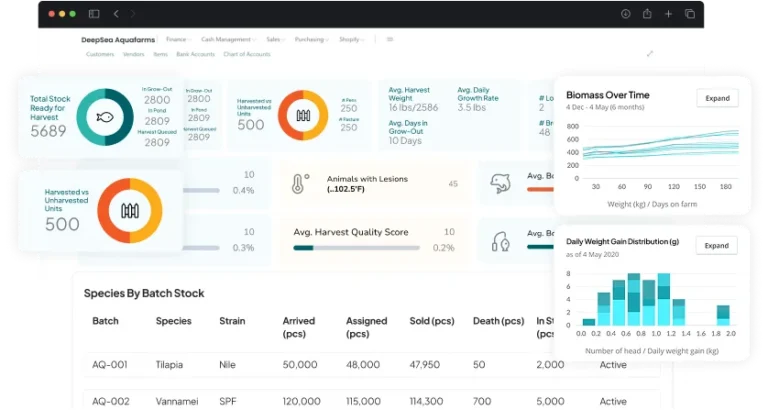
Folio3 AgTech provides hatchery managers with precise tools for broodstock tracking, larval feeding, hormone treatment logs, and spawning activity monitoring. These features help reduce overstocking risks and prevent genetic degradation issues commonly overlooked in manual systems.
With built-in hatch rate analytics and stocking readiness assessments, farm operators can make informed decisions that protect fish biodiversity and maintain water system balance.
Feed Precision and Waste Mitigation
According to the FAO (2022 report), feed costs typically account for over 50% of aquaculture operating expenses. The Folio3 AgTech software enables daily task automation to manage feeding schedules based on real-time biomass estimates and behavioral insights. By adjusting feed delivery using sensor-integrated controls, the platform minimizes feed waste, curbs nutrient pollution, and significantly reduces the farm’s environmental impact.
Real-Time Environmental Monitoring
Using IoT and sensor integration, Folio3 AgTech tracks critical water parameters like dissolved oxygen, ammonia, and temperature. The system triggers real-time alerts when values breach safe thresholds, allowing immediate corrective actions. This proactive fish health monitoring protects stock and helps maintain compliance with evolving aquaculture water discharge regulations.
Traceability and Compliance Without the Paper Trail
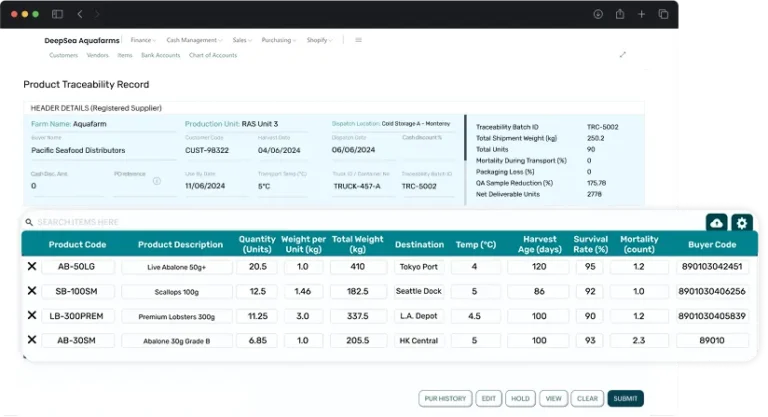
With growing consumer demand for fish farm traceability, Folio3 AgTech provides digital records of fish lifecycle events from hatch to harvest. Its compliance management module ensures transparent recordkeeping on treatments, feed inputs, and water quality. This reduces the administrative burden during audits and enables sustainable fish farming technology to meet certification standards like BAP and ASC with greater ease.
AI-Driven Decisions and Multi-Site Management
The software’s built-in AI capabilities deliver actionable recommendations for underperforming tanks, delayed growth cycles, or irregular fish behavior. For operations spread across multiple farms, Folio3’s multi-site dashboard allows managers to compare environmental data, inventory levels, and health reports in one centralized system, making decisions while supporting holistic fish farm management.
Conclusion
Sustainable fish farming is no longer a choice but a necessity. As environmental pressures and market demands grow, aquaculture management software becomes vital for responsible, efficient, and profitable operations. These solutions help reduce waste, improve fish health, and meet compliance standards by enabling real-time monitoring, automating tasks, and providing AI-driven insights.
Using aquaculture software is a strategic investment in long-term success and ecological balance. For aquafarmers seeking a reliable, end-to-end solution, Folio3 AgTech Smart Aquaculture Software offers the tools needed to scale operations while supporting sustainability at every stage of the farming lifecycle.
FAQs
What Is The Management Of Fish?
Fish management refers to the organized planning, monitoring, and control of all activities related to fish farming, including feeding, water quality monitoring, disease control, and harvesting. Aquaculture management software enhances fish farm operations by automating tasks and providing real-time data to support sustainable fish farming practices.
What Is The Most Sustainable Fishing Method?
The most sustainable fish farming methods include pole-and-line fishing, handline fishing, and aquaculture. Sustainable aquaculture supported by intelligent software minimizes environmental impact, reduces overfishing pressure, and ensures responsible stock replenishment through real-time data and eco-friendly practices.
What Is An Example Of Sustainable Aquaculture?
An example of sustainable aquaculture is a closed-loop recirculating system (RAS) that minimizes water use and waste. Combined with aquaculture management software, such systems allow farmers to monitor oxygen levels, feeding patterns, and fish health, improving efficiency and ecological balance.
How Can Fish Stocks Be Managed Sustainably?
Fish stocks are managed sustainably by setting catch limits, monitoring stock levels, regulating feed, and maintaining optimal water conditions. Aquaculture management software is crucial for offering real-time tracking, data-driven insights, and compliance tools that support long-term sustainability.
Which Method Is Best For Fish Farming?
The best method for fish farming depends on the species and environment, but integrated systems like RAS and biofloc are leading sustainable options. Pairing these systems with innovative aquaculture management software ensures optimized feeding, water quality, and health monitoring, maximizing yield while minimizing environmental impact.

